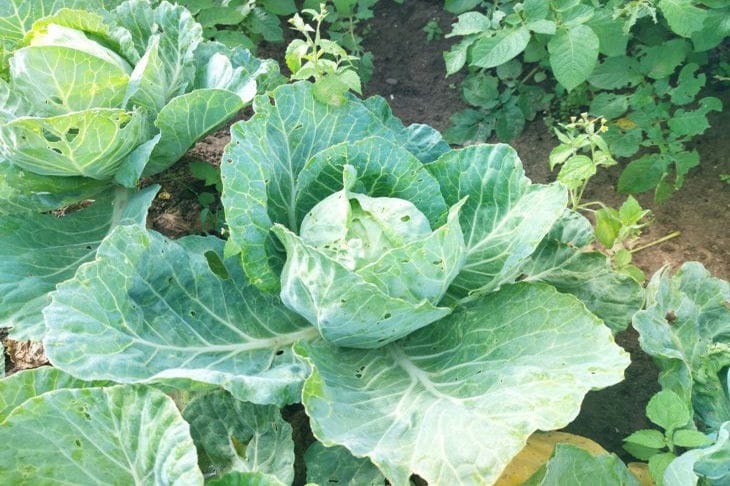What to do to keep cabbage from cracking: secrets of the perfect head of cabbage
Growing cabbage can be a real challenge for a gardener.
One of the most common problems is cracking of heads.
However, there are proven methods that will help prevent this problem and grow perfect cabbage.
Causes of Cabbage Cracking
Cabbage heads can crack for several reasons. The main factor is uneven moisture supply.
When cabbage receives a large amount of water after a dry period, it quickly absorbs it, which leads to rapid growth and, as a result, cracking.

Other causes include improper fertilization, especially excess nitrogen, and failure to harvest at the right time.
Selecting a variety and planting correctly
The first step to preventing cracking is to choose the right cabbage variety. There are varieties that are more resistant to cracking, such as "Slava 1305", "Podarok" and "Amager".
When planting, it is important to maintain an optimal distance between plants to ensure sufficient space for the growth and development of the root system.
Regular watering
Proper watering is the key to preventing cracking. Cabbage should be watered regularly but moderately. It is especially important to maintain constant soil moisture during the head formation period.
In hot weather, it is recommended to water early in the morning or in the evening to avoid evaporation of water and shock to the plants.
Mulching the soil
Mulching helps retain moisture in the soil and protects it from sudden temperature changes.
Straw, mown grass or specialized materials are suitable for achieving this goal.
Mulching a 5-7 cm thick layer around plants helps maintain optimal soil moisture and temperature.
Balanced nutrition
Proper fertilization is important to prevent cabbage from cracking. Avoid excess nitrogen fertilizers, especially during the head formation period.
Instead, focus on adding phosphorus and potassium fertilizers, which strengthen cell walls and increase plant resistance to stress.
Timely harvesting
It is important not to allow the cabbage to over-ripen in the garden bed. As soon as the head of cabbage has reached the required size and density, it should be harvested.
Overripe heads are more prone to cracking, especially when exposed to sudden changes in weather conditions.
Additional protective measures
If heavy rainfall is expected after a dry period, additional measures can be taken. One method is to slightly lift and turn the head to disturb part of the root system.
This will slow down the flow of moisture into the plant and reduce the risk of cracking. Another way is to cut the roots on one side of the plant to a depth of 10-15 cm.
Sun protection
During hot summer days, cabbage can be stressed by too much sunlight.
For protection, you can use shading nets or create a temporary shelter from non-woven material. This will help reduce moisture evaporation and prevent overheating of plants.
Proper soil preparation
Preparing the soil before planting cabbage also plays an important role in preventing cracking.
Deep loosening and the addition of organic fertilizers will help create a soil structure that promotes uniform distribution of moisture and nutrients.
